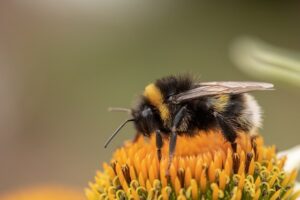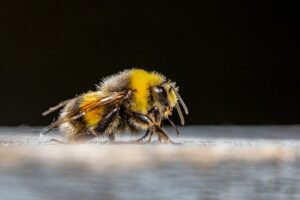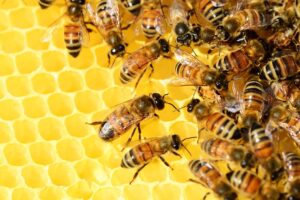Bumble bees are famous for their buzzing sound and the patent black and yellow stripes around their stocky bodies. There are around 250 species of bumble bees, with each bee colony having a designated queen. Small birds, badgers, and insects larger than bumble bees usually feed on them. However, the specific animal is the most vulnerable to the rising use of pesticides, diseases, herbicides, and climatic changes. Among the vulnerabilities, “Bumble bees and climate change” is the most alarming.
Bumble Bees And Climate Change – The Preset
As per a 2021 report, America’s bumble bee population has decreased by 90%, and within some time, it might get necessary to protect the species under the Endangered Species Act (ESA). Citizens in Rhode Island, Vermont, Wyoming, Dakota, Maine, New Hampshire, North Dakota, Idaho, and Maine can no longer spot the bumble bee population.
The memo published by the officials of the Federal Register stated that the American bumble bees require more study on them. It should include a different section for bees in addition to the threatened and endangered wildlife animals and plants.

In Australia, the carpenter bee is gradually shifting towards the mountainous and coastal regions, besides getting closer to the urbanized sectors. Similar conditions prevail in North America and Europe, primarily due to rising temperatures.
Bumble Bees And Climate Change – The Research
Over time scientists and researchers have noticed a global decline in the population of bumble bees—leading curious minds to some definite research work.
The North Carolina State University has come forward with a particular research study. Here laboratory records have shown that the worker bees in charge of collecting pollens had 0.07°C higher body temperature for every milligram of the pollen they carry. Those bees fully laden with pollen bags possessed a 2°C higher body temperature than the others without anything.

Bumble bees, in general, can adapt to various physiological or behavioral strategies to combat the temperature rise induced by carrying pollens. However, with the overall rise in global temperatures, things might get difficult for the bees.
The group focused on the Common Eastern Bumble Bee, Bombus impatiens. Samples were collected from JC Raulston Arboretum in Raleigh (North Carolina, USA) from 12th August to September 6th of 2021. The team depended on an operative temperature model comprising a dried dead bee with a thermocouple inside its thorax to move on with a natural sample-collecting process. Then the researchers placed the dead bee in a life-like posture over a flower, where the other bees kept coming – helping collect samples.
Bumble Bees And Climate Change – A Study Of The Deformed Wing Virus
Environmental temperatures do indeed control the physiological traits in insects. Thus monitoring their interactions with pathogens in the long run. To elaborate on the truth behind this, researchers came forward with a study on honeybees and their dealing with Deformed Wing Virus (DWV).
Adult honey bees were exposed to high and low temperatures. Researchers went on to study the effects & relationship between DWV infection and heat exposure.

Temperatures between 15 °C and 37 °C were the usual treatment temperature for the infected bees. Also, some were made to deal with acute heat treatments – between 40 and 43 °C.
After working on Bumble Bees and climate change- the research team came to terms with the following points.
- Both high and low temperature reduces the survival capacity of bees.
- Colony-wise genetic mutations and individual characteristics (hair length, body size, length of the relative wing) play an essential role in establishing the heat tolerance level of the bee.
- Bees exposed to 43 °C, generally habituated to 37 °C, faced a dramatic effect on their survival strategy. Thus raising the alarm about the rising temperature levels across the globe.
That is all, elaborating on the details about Bumble Bees and climate change. This primarily focuses on how increasingly it is getting important for humans to monitor their whereabouts and way of dealing with nature.



